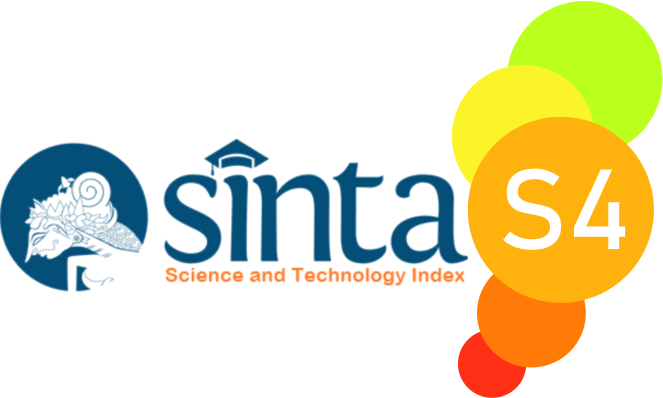Speech Acts and Politeness Strategies on Student’s Conversation at SMPN 3 Binjai
Abstract
The study's goal is to pinpoint the manners and speech patterns used by SMP N 3 Binjai students. Analytical qualitative analysis was employed by the researcher. Students were the research subject. The research instrument was observation. This study design was based on descriptive qualitative research. The most prevalent speech act utilized by the English instructor and pupils at SMP N 3 Binjai during instruction and learning in the classroom is a directive speech act, according to the conclusion reached through the data analysis procedure. The researcher found 104 utterances were identified as Politeness, 38 as Positive Politeness, and 30 indirect Politeness. It means that 75% of them are positive politeness utterances and 16% are negative politeness, According to the discussion above, it can be stated that Positive Politeness is the predominant form of politeness utilized by students at SMP N 3 Binjai during the teaching and learning process in the classroom. The researcher found that the percentage of the most dominant speech act used by students was 40 % for Directive within 38 frequency utterances and the second Assertive speech act was 33 % within 34 frequency and the total percentage was 73 %. The researcher concluded the most dominant Speech act was the Directive. The findings suggest that Mark Rutte employs a positive rather than a negative politeness style. It is a sign that Mark Rutte wishes to approach or treat his recipient like a friend by employing more considerate manners.
References
Brown, Penelope, Donna M. Johnson, Agnes.Weiyun.Yang, and Stephen C. Levinson. 1988. Politeness: Some.Universals in.Language Usage. Vol. 22.
Cutting, Joan. 2019. “Prgamatic and Discourse.” Routledge English Language.Introduction 13(1):104–16.
Cutting, Joan, and Kenneth.Fordyce. 2020. “Pragmatics: A Resource.Book for.Students.” doi: 10.4324/9781003010043.
Denzin, N. K. 2017. Sociological.Methods: A.Sourcebook. Taylor \& Francis.
Depraetere, Ilse. 2019. “Meaning.in Context and.Contextual Meaning: A Perspective.on the Semantics-Pragmatics Interface.Applied to Modal.Verbs.” Anglophonia 28. doi: 10.4000/anglophonia.2453.
Dewi, Ni Komang Julia. 2022. “An Analysis.of Speech Acts Used in The Witches Novel by Roald Dahl.” Jurnal Penelitian Mahasiswa Indonesia 2(2):91–98.
Diah Savitri, Yolanda, and Ni Made Ayu Widiastuti. 2021. “Directive.Illocutionary.Acts Used in Mission: Impossible-Fallout.Movie.” E-Journal of Linguistics 15(2):287. doi: 10.24843/e-jl.2021.v15.i02.p15.
Fauzia, Fauzia, and Tressyalina Tressyalina. 2019. “Expressive Speech ActionsinTere Liye’s Ayahku Bukan.Pembohong.and.Dia Adalah Kakakku.” (1). doi: 10.4108/eai.19-7-2019.2289495.
Fraser, Bruce. 1990. “Perspectives.on.Politeness.” Journal of Pragmatics 14(2):219–36. doi: 10.1016/0378-2166(90)90081-N.
Goffman, E. 1967. Interaction Ritual: Essays on Face-to-Face.Behavior. Doubleday.
Halil, Nur Ihsan, Samsuddin, Hendri Yawan, and Yuliati. 2023. “Exploring Directive Speech.Acts in Elementary School.Communication in Kolaka: Language.Pedagogy Implications.” International Journal of Language Education 7(2):241–54. doi: 10.26858/ijole.v7i2.44948.
Haucsa, Ghasella Makhpirokh, Abdul.Gafur Marzuki, Alek Alek, and Didin.Nuruddin Hidayat. 2020. “Illocutionary.Speech.Acts Analysis in Tom Cruise’S.Interview.” Academic Journal.Perspective : Education, Language, and.Literature 8(1):11. doi: 10.33603/perspective.v8i1.3304.
Indah Sari, Nur. 2019. “An Analysis of Speech.Acts.Used in English.Teaching.” Borneo Educational.Journal (Borju) 1(2):16–22. doi: 10.24903/bej.v1i2.611.
Kamaruddin. 2020. “SPEECH ACTS.ANALYSIS AND.ITS APPLICATION WITHIN THE.INTERLOCUTORS’.COMMUNICATION.” Ranah: Jurnal Kajian Bahasa 9(1):27–46.
Laila, Aruna, and Emil Septia. 2019. “Tindak Tutur.Ekspresif Dalam Novel-Novel.Tere Liye:Tinjauan.Pragmatik (Expressive.Speech.Act on the Tere.Liye’S Novels: Pragmatics Review).” Metalingua: Jurnal.Penelitian Bahasa 17(1):33. doi: 10.26499/metalingua.v17i1.112.
Lakoff, Robin Tolmach. 1992. Talking.Power: The Politics.Of Language. Basic Books.
Leech, Geoffrey. 2014. “The Pragmatics of Politeness.” Journal.of Chemical Information and Modeling 15(2):9–25.
Lestari, Sevi. 2022. “Jurnal Pendidikan.Dan Konseling ٥ م ل ع ي م ل ا م ن سن ل ۡ ِ ل ق ل ٱ ِ ب م ل ع ي ِ ل َّ ٱ ِ ٱ م ل ع ٤ م.” Jurnal Pendidikan Dan Konseling 4:1349–58.
Marliana, Rina, and.Achmadtaqlidul Fachruddin. 2020. “A Descriptive.Qualitative Research: Islamic.Values in.Mandarese.Oral Literature (Kalindaqdaq.Masaala).” 3(4):582–89.
Mckee, Alan. 2021. “Textual.Analysis: A Beginner’s Guide.” 127:139–49.
Miles, M. B., A. M. Huberman, and J. Saldana. 2018. Qualitative.Data.Analysis: A Methods Sourcebook. SAGE Publications.
Nuha, Ulin. 2020. “Politeness of Speaking.Introduced in Conversation.Texts in MTs English Textbook Grade VII.” Journal.of English Teaching.and Learning Issues 3(2):145. doi: 10.21043/jetli.v3i2.8902.
Nursafitri, Ike. 2021. “An Analysis of.Speech Acts.Used.by English Teacher at SMA Negeri 5 Barru.” 1–112.
Pasaribu, Arsen Nahum, Erikson.Saragih, and.Agustinus Gea. 2021. “Politeness.in Thesis Consultation.by WhatsApp: Do Lecturers.and Students Apply Different.Strategies?” Elsya : Journal of English Language Studies 4(1). doi: 10.31849/elsya.v4i1.6376.
Prime, Indonesia, and.Sulawesi Barat. 2021. “Language Politeness Strategies Of English Teachers In The Mandar Community.” 6(1):1–10.
Putri, Riza Alifianti, Ni Wayan.Sartini, and Muchamad Sholakhuddin.Al Fajri. 2020. “The Analysis of Illocutionary.Acts of Judges’ Comments.in.America’s next Top Model and Asia’s next.Top Model Competitions: A.Cross-Cultural Pragmatic Study.” Journal of Language and.Linguistic Studies 16(4):1885–98. doi: 10.17263/JLLS.851015.
Rismayanti, Hilda. 2021. “The Analysis.of Locutionary Act,.Illocutionary.Act, and Perlocutionary.Act in Five Feet.Apart Movie.” MEDIOVA: Journal.of Islamic.Media Studies 1(2):138–49. doi: 10.32923/medio.v1i2.1915.
Sapitri, Elia, . Prihantoro, Sarwo Edy, and.Jumatul Hidayah. 2020. “Politeness Utterances in English Discussion.” ELT Echo : The Journal of English Language Teaching in Foreign. Language.Context 5(2):170. doi: 10.24235/eltecho.v5i2.6723.
Septiani, G. H. 2019. “The Analysis.of Perlocutionary Acts.in the Theory.of.Everything Movie Script.” Ahmad.Dahlan University.
Simanjuntak, V. (2022). CONTEXTUALIZING SPEECH ACTS PERFORMED BY SUNDAY SCHOOL CHILDREN AT ST. FRANSISKUS ASSISI CHURCH MEDAN. Journey: Journal of English Language and Pedagogy, 5(1), 10-17. https://doi.org/10.33503/journey.v5i1.1817
Stenson, Nancy, and Tina Hickey. 2019. Understanding.Irish Spelling.
Togatorop, Firinta. 2019. “Politeness.Strategies Used in.the Conversation.between the Students of Finance.and Banking.Department.in Murni Sadar.Polytehnic Pematangsiantar.” Journal.of English Teaching as a Foreign Language 5(1):37–48.
Yule, George. 1996. “Pragmatics by George Yule.” Spain: OUP Oxford. 9.
Copyright (c) 2023 Metty Asima Panggabean, Erika Sinambela, Lastri W. Manurung

This work is licensed under a Creative Commons Attribution-ShareAlike 4.0 International License.

Journey: Journal of English Language and Pedagogy by http://ejurnal.budiutomomalang.ac.id/index.php/journey/index is licensed under a Creative Commons Attribution-ShareAlike 4.0 International License.






